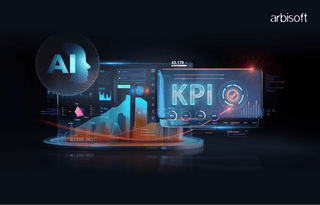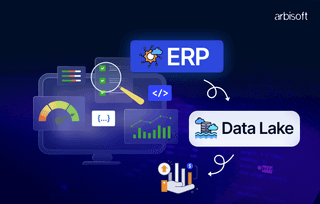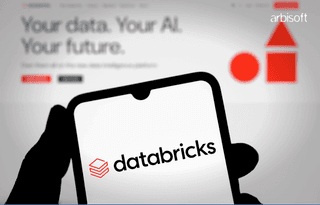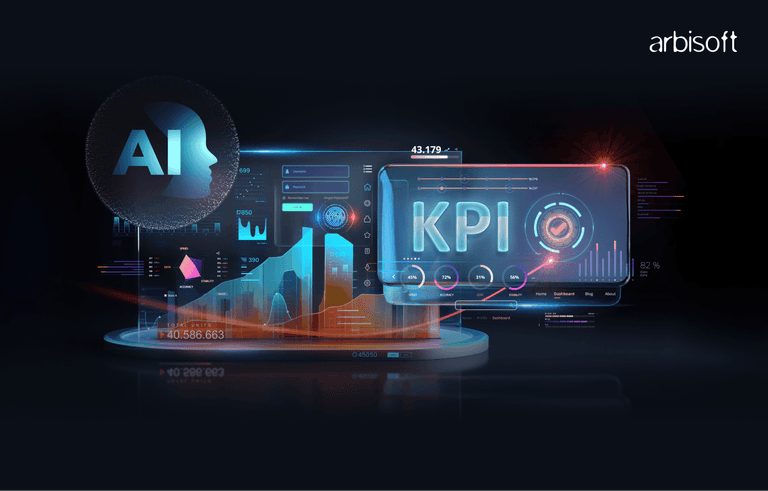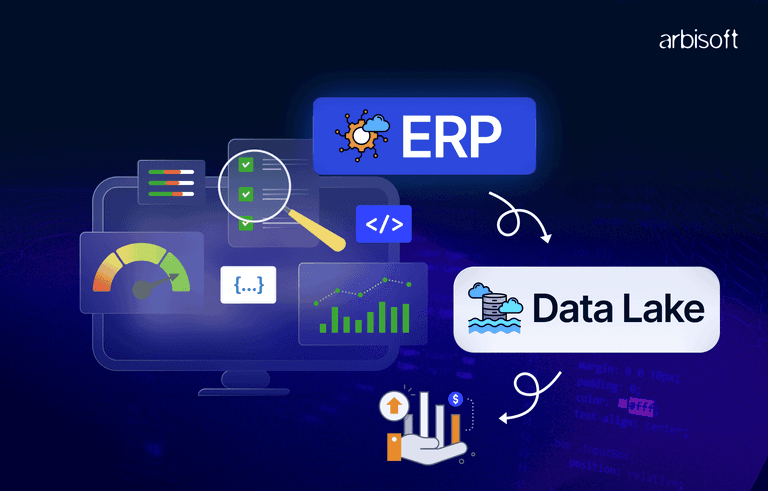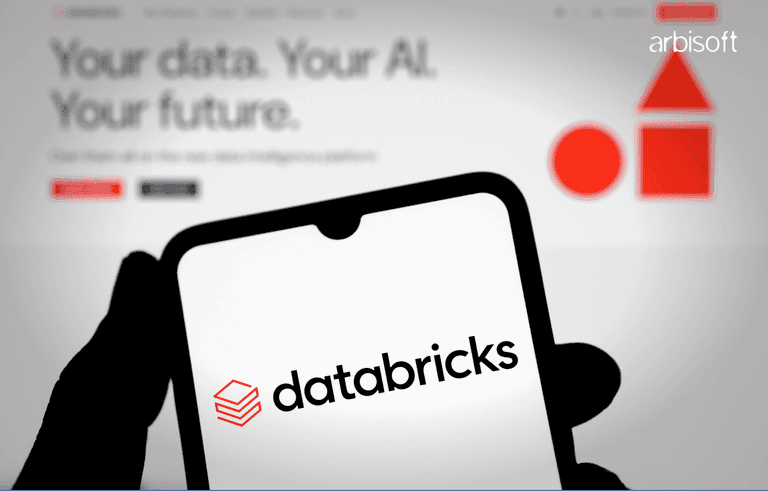We put excellence, value and quality above all - and it shows




A Technology Partnership That Goes Beyond Code

“Arbisoft has been my most trusted technology partner for now over 15 years. Arbisoft has very unique methods of recruiting and training, and the results demonstrate that. They have great teams, great positive attitudes and great communication.”
The Evolution, Impact, and Future of Large Language Models
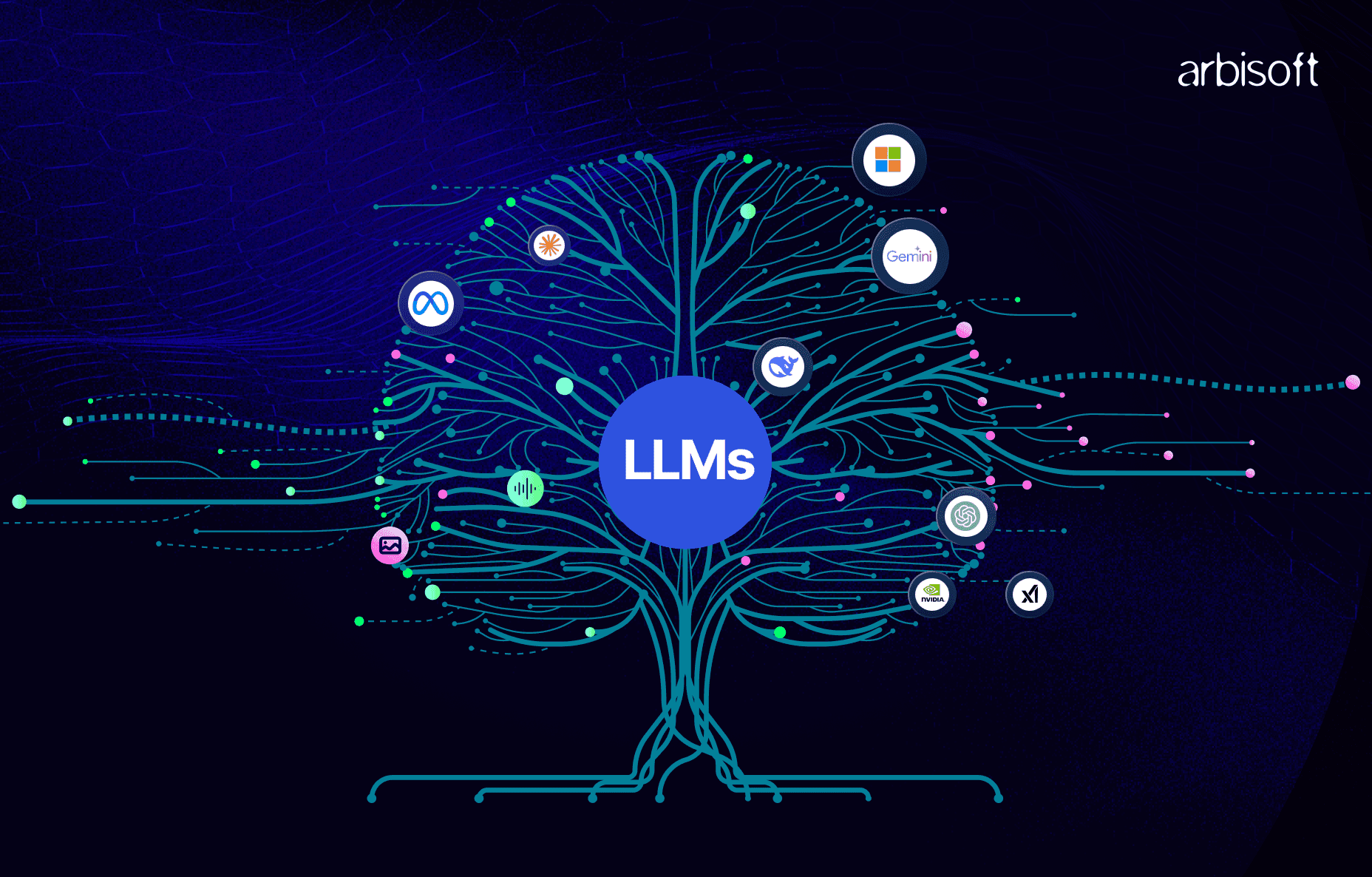
Artificial intelligence isn’t just for tech experts anymore, it’s part of daily life. Whether you ask a voice assistant to set a reminder, chat with a customer service bot, or get movie suggestions on your favorite app, AI is quietly helping with everyday tasks.
A big reason behind this shift is something called Large Language Models (LLMs). These are smart AI systems trained on massive amounts of text, which helps them understand and generate language that feels surprisingly human. LLMs have powerful features like smart replies, writing assistants, and chatbots. And they’re getting better, understanding not just words, but tone, context, and even emotion.
But not every LLM is the same. Some are great at generating images, others help developers write code, and some are built to assist businesses by automating tasks or handling customer interactions.
So, which models are leading the way? What makes them so powerful? And what do they tell us about the future of AI?
To answer that, let’s take a step back and see how we got here.
From Basic Blocks to a Language Revolution
To appreciate the power of today’s LLMs, it helps to start with the basics. At their core, these models aren’t designed to “understand” like humans do. Instead, they’re trained to predict the next word in a sentence, and surprisingly, that simple task unlocks some incredible abilities.
This idea comes from generative models designed to create new content based on patterns they’ve learned. Instead of copying and pasting, these models can create unique images, generate code snippets, draft product descriptions, or even suggest marketing slogans. All of this is driven by probability and training data, but it often feels like creativity.
Behind these capabilities is a breakthrough design called the transformer architecture. It introduced a smart mechanism called self-attention, which allows the model to weigh different words in a sentence based on their importance. Thanks to this, LLMs can handle context much better, tracking meaning across long paragraphs, understanding relationships between words, and producing answers that feel fluent and relevant.
This transformer structure is the foundation for nearly all modern LLMs, including the ones we use today. Without it, much of the AI magic we experience wouldn’t be possible.
Setting the Scene: Why 2024 Was a Big Year for AI
AI and large language models started getting popular in the last quarter of 2022, but it was in 2024 when they became truly mainstream. People began using them for everyday tasks, from coming up with ideas and writing code to creating images and managing their schedules. The need for smarter and faster tools grew quickly, and in response, big companies like OpenAI, Google, Meta, and Anthropic launched their most advanced models.
In short, 2024 wasn’t just a year of better models. It was a year of better use, where AI empowered individuals and teams to do more, faster, and smarter.
Let’s take a deeper look at some of the most significant models that were introduced over the past year.
Devin
Released: 12 March 2024 | By: Cognition
In March 2024, Cognition introduced something no one had before: an AI that could code like a real software engineer. Devin didn’t just answer questions; it could actually take on a full task, break it down, write the code, debug it, and even push it to GitHub. It worked across tools like VS Code, Bash, browsers, and terminals, just like a human dev.
What It Meant:
Devin showed us that the future of AI agents wasn’t just smart assistants, but smart workers. It wasn’t about generating a block of code but about owning the task from start to finish. For the wider industry, it meant that autonomy and task completion were now real possibilities.
GPT-4o
Released: 13 May 2024 | By: OpenAI
Just two months later, OpenAI changed the game again with GPT-4o. For the first time, one model could understand and create text, audio, and visuals all at once, and switch between them smoothly. This wasn’t just a tech upgrade, it changed how people interact with machines.
The model could respond with a human-like voice, showing natural tone and emotion. It also understood images in a smarter way, not just seeing what’s in them, but actually thinking about them. It could read charts, understand diagrams, and figure out what was happening in photos and videos.
Businesses quickly found ways to use it. Customer service teams handled support questions using voice and pictures. Education tools became more interactive, responding to both spoken questions and visual examples. Content creators used GPT-4o to make rich media from simple prompts.
Still, many people in the tech world were focused on what was coming next. Excitement around GPT-5 kept growing, especially around hopes for better reasoning, more safety, and deeper understanding across different formats.
What it meant:
If you've ever wished your digital assistant could handle tasks without constant back-and-forth, that's exactly what these new models aim to deliver. Future AI won't just respond to commands It will understand your goals, interpret context, and carry out multi-step tasks on your behalf. Whether it’s booking complex travel, managing your inbox, or coordinating projects, this is about AI that acts with real autonomy and emotional intelligence.
Claude 3.5 Sonnet
Released: 20 June 2024 | By: Anthropic
Soon after GPT-4o, Anthropic came out with Claude 3.5 Sonnet (free) and Haiku (paid). These models were built with deep reasoning in mind. Claude could now read large documents, summarize them better, and even reason more clearly than before. People loved it for work—it gave more thoughtful, organized answers that made sense in real-world tasks.
What it meant:
Claude 3.5 reminded us that quality over hype still mattered. It wasn't flashy, but it worked well, especially for businesses. Its long-context understanding and honest tone made it a favorite for people working with large documents or needing insightful answers.
Meta Llama 3.1
Released: 23 July 2024 | By: Meta
By July, Meta came up with Meta Llama 3.1, a lighter, faster version of its previous open-weight models. These were free to use and fine-tuned, and they delivered better instructions and reasoning while utilizing fewer resources. Developers could download them, train on top, and build custom apps.
What it meant:
Meta Llama 3.1 proved that open-source models were catching up. You didn’t need to rely on APIs or subscriptions, you could run great AI on your own machine or server. It taught the community that freedom and performance can go together. It was open-source and worked in eight languages. This meant anyone could access the benefits of a great AI model without spending much money.
Mistral Large 2
Released: 24 July 2024 | By: Mistral
Just 24 hours after Llama 3.1, Mistral Large 2 dropped, and the open-source world got even stronger. Mistral’s models were small, fast, and powerful, often competing with GPT-4-level tasks. They supported multiple languages and were made for high-speed generation. Mistral Large 2 became a favorite for developers because it was flexible, supported many languages, and was good at coding. Its 32,000-token context window helped it handle long documents, and its efficient design allowed it to run well even on simple machines. Its strong performance in many languages made it a good choice for global businesses.
What it meant:
Mistral proved that lean models can still pack a punch. Its release pushed the industry toward better efficiency. We learned that size doesn’t always equal strength—smart design can do more with less.
Grok-2
Released: 13 August 2024 | By: xAI (Elon Musk)
On 13 August 2024, Elon Musk’s xAI entered the AI race with Grok-2. According to the company’s data, this model beat top models in thinking and coding tasks. Grok-2 could access real-time data and solve visual math problems. Power users liked it. Its business API helped companies get started fast and safely.
What it meant:
From Grok 3, we learned that xAI is building a very fast and smart AI model. It can solve tough problems in math, science, and coding better than many other models. Grok 3 also brings new features like DeepSearch and voice replies. Overall, xAI is working hard to stay ahead in the AI race. So stay open to change and keep learning.
Cohere Command R+
Released: 30 August 2024 | By: Cohere
In August, Cohere introduced Command R+, their best open-weight model made specifically for retrieval-augmented generation (RAG). It could pull information from long documents and keep responses grounded, accurate, and reliable. Businesses used it to build chatbots and internal tools.
Command R+ stood out because it could gather and create information while working well with other tools. It could connect to external knowledge, APIs, and tools, and keep track of what was happening in complex tasks. Tests showed it worked as well as or even better than GPT-3.5 on many tasks, yet cost less.
What it meant:
Cohere showed that good grounding beats wild guessing. In a world full of hallucinations, a model that can stick to facts stands out. This release made enterprise AI apps more trustworthy and useful.
Gemini 2.0
Released: 5 February 2025 | By: Google DeepMind
In early 2025, Google silently released Gemini 2.0, a smarter, smoother version of its original Gemini models. It could better understand charts, video, and math problems. Gemini also replaced the old PaLM models and became the core AI for Android, Gmail, Docs, and YouTube.
What it meant:
Gemini 2.0 wasn’t just a model, it was a system built into tools we use every day. It proved that integrating AI inside products, not just around them, is the key to wide adoption. It is also the best new idea that often works quietly in the background. They make hard things easy for everyone.
Majorana 1
Released: 19 February 2025 | By: Microsoft
Microsoft introduced Majorana 1, its own AI model, trained separately from OpenAI. This model was designed to be lightweight and secure, especially for enterprise and on-premises use. It wasn’t flashy, but it was focused. Also, it aimed for a big jump in AI training using quantum tech. True quantum power may still be years away, but the groundwork is already being laid.
The Takeaway:
Majorana showed that diversifying AI sources is smart business. Microsoft made it clear that relying only on external labs isn’t enough—they needed their own tools, fine-tuned for their own users.
Gemini 2.5 Pro
Released: 25 March 2025 | By: Google DeepMind
Just a month later, Gemini 2.5 Pro took things to the next level. It combined image, video, code, and text into one fully multimodal model. It even supported real-time classroom tools, like solving science problems by looking at lab data or equations on the board.
The Takeaway:
This release showed us how AI can transform education and productivity. Gemini wasn’t just smart—it was usable in real-world environments, from schools to teams to apps.
Meta Llama 4
Released: 5 April 2025 | By: Meta
Meta returned with Llama 4, an open-weight model strong enough to compete with GPT-4. It offered better reasoning, coding, and image understanding, and was free to use, modify, and integrate. It had a Mixture-of-Experts (MoE) design. It could handle text, images, sound, and video. But many found it hard to use.
In theory, the model could handle different types of input at the same time and keep track of context across them. However, in practice, many users, especially solo developers and small companies, found it hard to use. The design was too complex to fix easily, and it needed more computing power than most regular graphics cards could offer. Many felt it was rushed out to compete with models like DeepSeek R1, Alibaba’s Qwen, and Kimi k1.5. So even though it looked great on paper, it wasn’t ready for real-world use.
We learn an important lesson here:
Even promising technology can fail if it focuses too much on technical specs and not enough on the user experience. For businesses and creators, it’s a reminder that real innovation should solve real problems, not just show off big numbers or flashy features.
Nvidia Nemotron-4 70B
Announced: March 2025 (GTC 2025) | By: Nvidia
At GTC 2025, Nvidia introduced Nemotron-4 70B, a model designed not just for use but to help others build AI models. It supported pre-training, fine-tuning, and could act as a base model for enterprise AI workflows.
What it meant:
Nvidia reminded us that it doesn’t want to compete with chatbot builders; it wants to be the one powering their tools. This move confirmed that the AI race isn’t just about models, it’s about infrastructure.
Insight: Great AI needs great hardware. The next big progress will come where software and chips meet.
LLMs Still Need Double-Checking
Despite the rapidly evolving AI space introducing new LLM models at breakneck speed, there's still a need for human intervention because they get things wrong.
LLMs can do amazing things, like creating hyper-realistic product personas. However, they can still struggle with tasks that require simple logic, such as counting occurrences of a letter in a word. While tasks like counting the "R"s in "strawberry", as explained in Why LLMs Can’t Count the R’s in Strawberry, have become less of a challenge, the underlying tokenization process can still cause problems in certain contexts. This means that while LLMs are improving, tokenization can still affect accuracy in different tasks or environments.
LLMs Lessons of 2024
As LLMs keep improving, it's important to understand how they work and where they still need to grow. Here are some key lessons to keep in mind.
1. Why Good Prompts Matter
LLMs need clear instructions to give good answers. If your question is confusing or missing details, the answer might be wrong. Giving examples or extra information helps the model understand better.
Lesson: Ask clear and complete questions to get better results.
2. Words vs. Letters: Why It Matters
LLMs break text into smaller parts to understand it (this is called tokenization).
But they mostly focus on whole words or chunks, not individual letters.
This can cause problems in tasks like counting letters, checking spelling, or understanding made-up or uncommon words.
For example, the word “strawberry” might be split into “straw” and “berry,” which can confuse the model.
Lesson: Some tasks need the model to look at letters as well as words for better accuracy.
3. LLMs Can Be Biased
LLMs learn from the internet, books, and other texts. Some of that text includes unfair ideas about race, gender, or culture. That means the model can sometimes give biased or harmful answers.
Lesson: Always review the model’s responses with care, especially when dealing with sensitive topics. It's equally important to train LLMs on diverse, balanced, and carefully curated datasets to reduce bias and promote fairness in AI-generated content.
4. Openness to AI Matters
Some people are learning how to work with AI, giving better prompts, checking facts, and using it efficiently to save time and effort. And some are still refusing it in their daily workflows. Over time, the ones who learn to use AI well will have an advantage.
Lesson: Being open to AI adoption in your workflow not only increases your chances of success but also positions you to stay ahead in this AI-driven environment. Those who resist may find themselves left behind.
As these lessons have shaped how we build and improve LLMs, they're also reshaping how people use AI in their everyday lives. While early uses focused on productivity and information, the way people interact with generative AI is quickly evolving.

How People Are Really Using Gen AI in 2025
Let’s take a closer look at how AI use is changing in 2025, from work-focused tasks to more personal and emotional support.

The image shows how people's use of generative AI is changing from 2024 to 2025. In 2024, people mainly used AI for tasks like generating ideas and editing text. But in 2025, there's a big shift toward more personal and emotional uses.
The top use case becomes therapy or companionship, showing people want AI to support their mental health. Other rising uses include organizing personal life, finding purpose, and enhancing learning. Technical tasks like coding and troubleshooting are still used, but are less dominant. Overall, AI is moving from being a tool for work to helping with personal growth and well-being.
Ethical Considerations: Finding the Right Path Forward
As AI grows in our daily lives, we must think about the ethical problems it brings. Large language models (LLMs) are being used more frequently in many jobs, and this power comes with a duty. Here are the main ethical issues we need to work on as we move ahead.
- People need to see how AI works. AI models often operate like a "black box," meaning their decision-making processes are not always clear or understandable. This can create a lack of trust, especially when these decisions impact people's lives. It’s important for people to understand how AI makes choices and what factors influence its behavior. AI should be easy to explain, so users can feel confident in how it works and trust its outcomes.
- Bias is another big worry. LLMs can pick up the bias in the data they learn from. This could cause unfair choices in jobs, health care, or police work. We must cut bias in AI so it helps all people the same.
- We must also guard privacy. As AI looks at more of our personal data, we must keep user privacy safe. People should own their data, know how it's used, and who can see it.
- We also need to see how AI changes our world. How will these tools shift jobs, money, and fair play? We must think about how AI can make good changes without making the gaps bigger.
- In upcoming years, we think there will be more rules for making AI. When tech firms, ethics pros, and rule makers work as a team, AI tools will be used the right way for all people.
Conclusion & Final Thoughts: Creating the Future of AI
The future of AI in 2025 looks bright with many new paths. LLMs are getting smarter and more specialized. They help in health care, schools, and different industries. They can grasp and make text, pictures, and sound. These models will keep getting better and change how we work and use tech.
As these models grow strong, we must use them in good ways. The future of AI hangs on the mix of new ideas and doing what's right. Makers must build AI models that are open, fair, and guard privacy. These tools should boost human skills, not take their place.
Keep in mind that AI is a tool to help humans work, not to take over. The best work comes when humans and AI team up, each adding their best skills. As we go on, we must face ethical issues and make sure AI tools match what humans value.
Looking ahead, we will see more AI tools made for each job type. This makes them fix real-world problems better. But we must keep ethics first when we build. We must not make bias worse or break into privacy as we make new things.
The road ahead has much hope, but it needs smart choices and teamwork. This will make sure AI helps all people and builds a better world for each one of us.








